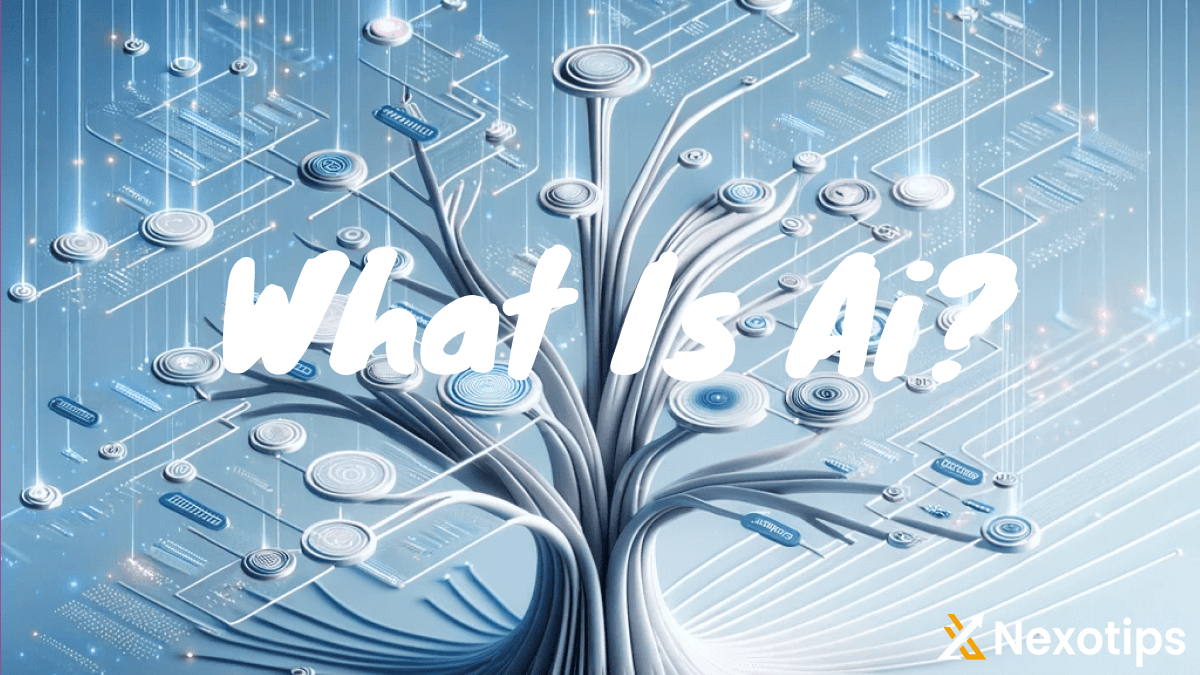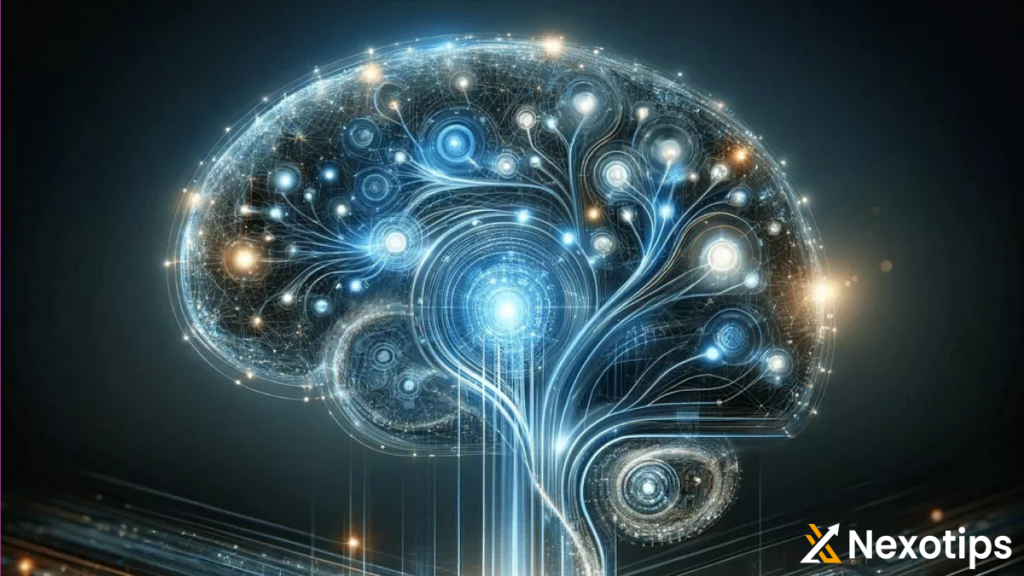
Best Way Understanding AI: What is Ai, Why It Matters, and How It Works On 2024
What is AI? Artificial Intelligence, commonly known as AI, is a revolutionary technology that simulates human intelligence in machines. What is AI capable of? It can learn, reason, and make decisions, transforming various industries and daily life. What is AI’s significance in today’s world? It enhances efficiency, enables advanced data analysis, and drives innovation. What is AI’s operational mechanism? It uses algorithms, machine learning, and deep learning techniques to process vast amounts of data and perform tasks that typically require human intelligence. Understanding what AI is and how it works is crucial for leveraging its potential and addressing the ethical considerations it brings.
Table of Contents
What Is Ai (Artificial Intelligence) :
What is Ai : Artificial intelligence pertains to computer programs that can execute activities that are conventionally associated with human intellect, such as object identification, voice interpretation, prediction, and natural language generation. AI systems pick up this skill by sifting through vast volumes of data and searching for patterns to mimic in their own decision-making. While humans will frequently oversee an AI’s learning process, encouraging wise choices and punishing foolish ones, some AI systems are built to learn on their own.
AI systems become more adept at completing certain jobs over time, which enables them to adjust to new inputs and make judgments without having to be specifically trained to do so. Artificial intelligence is essentially the study of training robots to think and learn like people in order to automate tasks and solve issues more quickly.
Why Is Artificial Intelligence Important?
Artificial intelligence (AI) seeks to provide computers human-like processing and analyzing skills so that it may function as a helpful tool alongside people in daily life. Artificial intelligence (AI) can automate several processes at once, solve complex issues, and analyze and classify massive amounts of data. These abilities may save time and close operational gaps that people would overlook.
AI is the cornerstone of computer learning and is applied in nearly every sector of the economy, including manufacturing, healthcare, and finance. It facilitates data-driven decision-making and the completion of labor-intensive or repetitive activities.
Artificial intelligence is used in many current technologies to improve their capabilities. It may be found in cars with autonomous driving features, e-commerce sites with recommendation engines, and cellphones with AI assistants. By leading research in healthcare and climate initiatives, developing robots for risky occupations, and testing online fraud detection systems, artificial intelligence (AI) also contributes to public safety.
How Does AI Work?
Systems with artificial intelligence use data and algorithms to function. First, in a procedure called as training, vast amounts of data are gathered and fed into mathematical models, or algorithms, which utilize the data to identify patterns and provide predictions. After training, algorithms are used in a variety of applications, where they continually absorb new information and adjust to suit it. As a result, AI systems can eventually carry out difficult tasks like data analysis, language processing, and picture identification with increased efficiency and accuracy.
Machine Learning
Machine learning (ML), in which computers learn from massive datasets by finding patterns and correlations within the data, is the main technique used to construct AI systems. In order to “learn” how to grow better at a task over time without necessarily having been designed for it, a machine learning algorithm makes use of statistical approaches. In order to forecast new output values, it takes past data as input. In machine learning, there are two types of learning: supervised learning, which uses labeled data sets to determine the anticipated output given an input, and unsupervised learning, which uses unlabeled data sets to determine the expected outputs.
Neural Networks
Neural networks, a collection of algorithms that analyze data by simulating the structure of the human brain, are commonly used in machine learning. Layers of linked nodes, or “neurons,” that process and transfer information among themselves make up these networks. Through modulating the degree of connectivity among these neurons, the network can acquire the ability to identify intricate patterns in data, anticipate outcomes based on novel inputs, and even gain insight from errors. Neural networks may therefore be used for picture recognition, audio recognition, and word translation between languages.
Deep Learning
One significant area of machine learning is deep learning. It makes use of a kind of artificial neural network called a deep neural network, which has several hidden layers that process data and enable a machine to learn “deeply”—that is, to identify increasingly complex patterns, form connections, and weight input to get the best outcomes. Deep learning is essential to the creation and progress of AI systems because it excels at tasks like audio and picture recognition and natural language processing.
Natural Language Processing
The goal of natural language processing, or NLP, is to enable computers to comprehend and generate spoken and written language similarly to people. To assist computers in analyzing unstructured text or speech input and extracting pertinent information, natural language processing (NLP) integrates techniques from computer science, linguistics, machine learning, and deep learning. Natural language production and voice recognition are the two primary areas of focus for NLP, which is used in applications such as virtual assistants and spam detection.
Computer Vision
Another common use of machine learning techniques is computer vision, in which computers analyze unprocessed photos, videos, and other visual assets to derive insightful information. By breaking down images into individual pixels and labeling them appropriately, deep learning and convolutional neural networks enable computers to distinguish between different visual forms and patterns. In addition to performing tasks like facial identification and detection in self-driving vehicles and robotics, computer vision is used for picture recognition, image categorization, and object detection.
Types of Artificial Intelligence
Artificial intelligence can be classified in several different ways.
Robust vs. Feeble AI
Weak AI and strong AI are the two main categories into which AI may be divided.
AI that automates particular tasks is referred to as weak AI, or narrow AI. Although it is applied to a tightly defined issue and functions inside a confined environment, it usually performs better than people. As of right moment, every AI system—from chatbots to recommendation engines to email inbox spam filters—is an example of a weak AI.
Artificial general intelligence (AGI), often known as strong AI, is a theoretical standard at which AI may be as intelligent and flexible as humans and solve issues that it has never been trained to tackle. It is uncertain if artificial general intelligence (AGI) will ever come into existence.
The Four Types of AI
The four primary categories of AI are theory of mind, self-awareness, limited memory, and reactive machines.
Reactive machines take in their surroundings and respond accordingly. They are able to respond to orders and requests precisely, but they are not able to retain information or make decisions in real time based on prior experiences. Reactive machines can therefore be employed to carry out a restricted range of specialized tasks. IBM’s Deep Blue, which is used to play chess, and Netflix’s recommendation engine are two examples.
Limited memory When gathering information and making judgments, AI can retain past facts and forecasts. In essence, it searches the past for hints to make future predictions. restricted memory AI is produced when a group of people consistently trains a model to evaluate and apply fresh data, or when a system is developed for AI that allows models to be automatically trained and updated. Self-driving automobiles and ChatGPT are two instances.
The term “theory of mind” refers to a sort of artificial intelligence (AI) that does not yet exist but expresses the concept of an AI system that is able to recognize and comprehend human emotions in order to forecast future behavior and make decisions for itself.
Artificial intelligence with self-awareness, or a feeling of self, is referred to as self-aware AI. There isn’t any AI like this yet. Theoretically, however, self-aware AI is conscious in a manner similar to that of a person and is aware of both its own presence and other people’s feelings.

